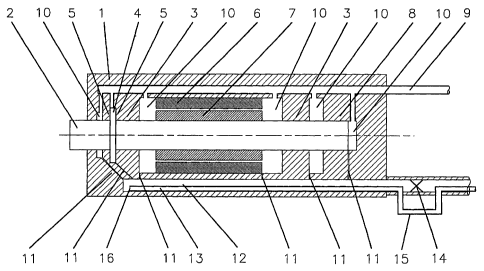Some of the information on this Web page has been provided by external sources. The Government of Canada is not responsible for the accuracy, reliability or currency of the information supplied by external sources. Users wishing to rely upon this information should consult directly with the source of the information. Content provided by external sources is not subject to official languages, privacy and accessibility requirements.
Any discrepancies in the text and image of the Claims and Abstract are due to differing posting times. Text of the Claims and Abstract are posted:
| (12) Patent: | (11) CA 2434190 |
|---|---|
| (54) English Title: | METHOD OF LIQUID WITHDRAWAL FROM A TOOL SPINDLE |
| (54) French Title: | PROCEDE PERMETTANT DE RETIRER DU LIQUIDE D'UNE BROCHE D'OUTIL |
| Status: | Deemed expired |
| (51) International Patent Classification (IPC): |
|
|---|---|
| (72) Inventors : |
|
| (73) Owners : |
|
| (71) Applicants : |
|
| (74) Agent: | BORDEN LADNER GERVAIS LLP |
| (74) Associate agent: | |
| (45) Issued: | 2008-06-03 |
| (86) PCT Filing Date: | 2001-09-27 |
| (87) Open to Public Inspection: | 2002-08-01 |
| Examination requested: | 2006-09-07 |
| Availability of licence: | N/A |
| (25) Language of filing: | English |
| Patent Cooperation Treaty (PCT): | Yes |
|---|---|
| (86) PCT Filing Number: | PCT/SE2001/002081 |
| (87) International Publication Number: | WO2002/058867 |
| (85) National Entry: | 2003-07-07 |
| (30) Application Priority Data: | ||||||
|---|---|---|---|---|---|---|
|
A method for withdrawing liquid from the liquid bearings of a spindle (1)
carried in liquid bearings (3, 5) distinguished in that with the help of
pressurised gas, the liquid, together with the gas, is forced to exit the
spindle during the operation of the spindle via at least one first channel
(12), and that when the spindle is shut down, is forced to exit via at least
one second channel (13) with a smaller flow-through cross-section than the
first channel.
La présente invention concerne un procédé permettant de retirer du liquide des coussinets de liquide d'une broche (1) montée dans des coussinets de liquide (3, 5). Ledit procédé est caractérisé en ce qu'à l'aide de gaz sous pression, le liquide, ainsi que le gaz, sont contraints à sortir de la broche au cours de l'actionnement de la broche à travers au moins un premier canal (12) et en ce que lorsque la broche est immobilisée, le liquide, ainsi que le gaz, sont contraints à sortir à travers au moins un second canal (13) présentant une section transversale d'écoulement inférieure par rapport au premier canal.
Note: Claims are shown in the official language in which they were submitted.
Note: Descriptions are shown in the official language in which they were submitted.

For a clearer understanding of the status of the application/patent presented on this page, the site Disclaimer , as well as the definitions for Patent , Administrative Status , Maintenance Fee and Payment History should be consulted.
| Title | Date |
|---|---|
| Forecasted Issue Date | 2008-06-03 |
| (86) PCT Filing Date | 2001-09-27 |
| (87) PCT Publication Date | 2002-08-01 |
| (85) National Entry | 2003-07-07 |
| Examination Requested | 2006-09-07 |
| (45) Issued | 2008-06-03 |
| Deemed Expired | 2009-09-28 |
There is no abandonment history.
| Fee Type | Anniversary Year | Due Date | Amount Paid | Paid Date |
|---|---|---|---|---|
| Application Fee | $300.00 | 2003-07-07 | ||
| Maintenance Fee - Application - New Act | 2 | 2003-09-29 | $100.00 | 2003-09-11 |
| Registration of a document - section 124 | $100.00 | 2003-10-08 | ||
| Maintenance Fee - Application - New Act | 3 | 2004-09-27 | $100.00 | 2004-08-30 |
| Maintenance Fee - Application - New Act | 4 | 2005-09-27 | $100.00 | 2005-09-02 |
| Maintenance Fee - Application - New Act | 5 | 2006-09-27 | $200.00 | 2006-08-30 |
| Request for Examination | $800.00 | 2006-09-07 | ||
| Maintenance Fee - Application - New Act | 6 | 2007-09-27 | $200.00 | 2007-09-12 |
| Final Fee | $300.00 | 2008-03-18 | ||
| Registration of a document - section 124 | $100.00 | 2008-09-08 |
Note: Records showing the ownership history in alphabetical order.
| Current Owners on Record |
|---|
| FISCHER AG PRAEZISIONSSPINDELN |
| Past Owners on Record |
|---|
| LIND FINANCE & DEVELOPMENT AB |
| LIND, BJOERN |